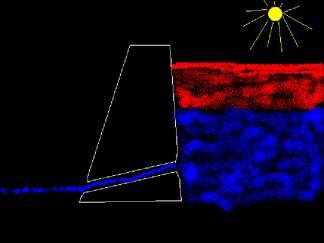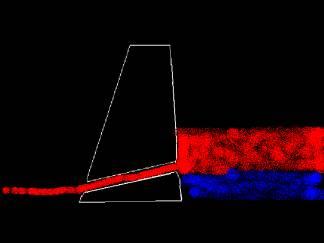Cougar Reservoir Temperature Control
Bull trout, Salvelinus confluentus, are native to the McKenzie Basin and inhabit Cougar Reservoir and the South Fork McKenzie above the reservoir. The Columbia River distinct population segment, which includes McKenzie River bull trout, was listed as threatened under the ESA in June of 1998. Construction of the temperature control facilities required lowering the reservoir below minimum pool, reducing the area from 1260 acres to approximately 106 acres from April 2002 through December 2004. Because drafting the reservoir could adversely affect the bull trout population, the Corps funded this study to minimize impacts of construction on bull trout. To protect this population, we needed to understand the movement and habitat use of bull trout in the South Fork McKenzie watershed, and to develop an emergency plan should environmental conditions become detrimental to the overall health of the population.

During spring and summer, the sun warms the surface water of Cougar Reservoir, but water near the bottom remains cold. Because the intakes for the powerhouse and regulating outlet are deep, the South Fork of the McKenzie River below the dam was unnaturally cold druing the summer, blocking salmon migration and reducing productivity in the river below the dam.

During the fall and early winter as the reservoir level dropped, warm surface water reached the intakes. Water released from the dam was unnaturally warm causing Chinook salmon eggs to hatch several months early decreasing their survival.

The USACE modified the intake tower by building a 302 foot tall wet well. There are three slots in the wet well, each equipped with three overlapping gates. The gates slide up and down allowing selective withdrawal of water from various levels of the reservoir. The water is mixed to the desired temperature and discharged through the existing penstock and regulating outlet. This enables the Corps to control the temperature of the water discharged below the dam, and reduce impacts in South Fork McKenzie River and McKenzie River downstream of the project.